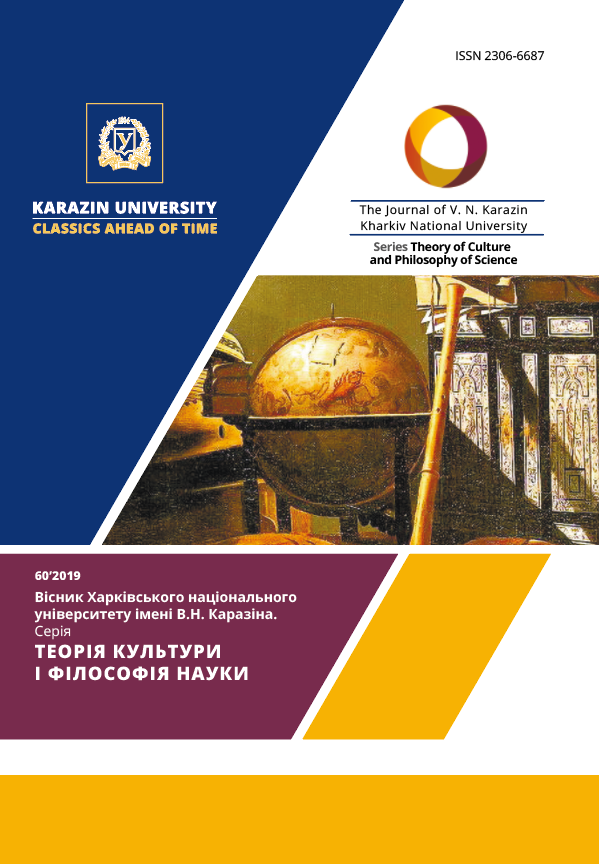Yoga as a step to “authentic vertical tension”
opportunities and reality
Abstract
Modern changes in society, globalization, intercultural contacts have led to unexpected results associated with an understanding of the tradition of yoga. Specialists explore the cultural, psychological, medical and practical, social dimensions of yoga, but the basic meaning of yoga as a search for opportunities for vertical transcendental ascent in a tense and rapid world development pace is leveled. There are a number of studies describing the types of modern yoga, which were formed under the influence of the culture of the west. The authors propose to reconsider the idea of the formation of a western model, based on the thoughts of p. Sloterdijk. The art of education (paideia) was an innovative step of the ancient greeks in order to bring pupils closer to the vertical wall as a symbol, contributing to the implementation of steps to the impossible, to the highest - transcendental. But the demands of life under the conditions of the emergence of an industrial society reduced the tension of this slogan. In the culture of the industrial society, yoga as a traditional sphere of eastern philosophy was transformed into a new phenomenon, the role and significance of which is rather vague in relation to its roots. Most often, yoga is understood as a synthesis of the spiritual and the physical with the dominance of the latter, without taking into account its ideological character, philosophy, experience of the guru, yogin (teacher).
The authors emphasize the similarity of ideas between high demands in search of an exit to the transcendental cultures of the east and the west with examples of parallel reading of the ideas of paideia and traditional yoga. The epistemology of yoga helps to realize the continuity of knowledge and morality. In the conditions of the development of today, when we feel the transition to a new nature of knowledge, where the interest of the body takes place in new contexts, yoga begins a new round of transformations. The phenomenon of the body acquires special significance in the conditions of a departure from the metaphysical tradition of human understanding. The body becomes a metaphor for the designation of everything that goes beyond the physical. If the epoch of modernism has deprived a person of his main discovery - the search for the transcendent, the search for an outlet to him, then in the new round of human development the idea of teaching anthropotechnics can bring yoga closer to its original origins
Downloads
References
Дольська о.о. метафора сприйняття світу як підґрунтя духовної складової людства / о.о. дольська // матеріали міжнародної науково-практичної конференції «духовність як складова української державності», 9-10 квітня 2019 р., харків. ‒ с. 88-90.
Дольская о. Трансформация йоги в условиях глобального рынка / о. Дольская // international scientific-practical conference «invitation theory and practice: problems and prospects» (2019, may 9-10) // электрон. Ресурс. [режим доступу] http://dspace.lsu.lt/bitstream/handle/123456789/62/tezes_2019%2005%2013.pdf?sequence=1&isallowed=y
Дольская о.а. трансформации рациональности в современном образовании / о.а. дольская (2013) // електрон. Ресурс. [режим доступу] // http://repository.kpi.kharkov.ua/handle/khpi-press/4847
Слотердайк п. Інтерв’ю петера слотердайка з головним редактором німецького філософського часопису «philisophie magazin» вольфрамом айленбергером / п. Слотердайк. Пер. Култаєва м.д. // філософська думка, 2015, №2. ‒ с. 107-112.
Слотердайк п. Ти мусиш змінити своє життя (уривки з твору) / п. Слотердайк. Пер. Култаєва м. Д. // філософська думка, 2015, №2. ‒ с. 95-106.
Тибетская йога и тайные доктрины. Из добрых пожеланий расположенного ко всем будды саманта-бхадра (перевод ламы кази дава-самдуп). Составитель в. И. Эванс-венц (1957) // электрон. Ресурс. [режим доступу] http://bibleoteca.narod.ru/tibet-doctrina.pdf
Baier k. Modern yoga research: insights and questions / k. Baier (2016) // электрон. Ресурс [режим доступу] https://www.academia.edu/1239028/modern_yoga_research
De michelis elizabeth. A history of modern yoga: patanjali and western esotericism / elizabeth de michelis (2005). Http://modernyogaresearch.academia.edu/elizabethdemichelis
Feuerstein georg. 1947-2012 / traditional yoga studies (2019) // электрон. Ресурс. [режим доступу]: http://www.traditionalyogastudies.com/about-us/georg-feuerstein/
Ganeri j. Epistemic pluralism: from systems to stances / ganeri jonardon. Journal of the american philosophical association (30 january 2019) // электрон. Ресурс. [режим доступу] https://doi.org/10.1017/apa.2018.34
Newcombe s. The development of modern yoga: a survey of the field. The open university (uk) / s. Newcombe (2009) // электрон. Ресурс. [режим доступу] https://www.researchgate.net/publication/221935759_the_development_of_modern_yoga_a_survey_of_the_field
Revenue of the yoga industry in the united states from 2012 to 2020 (in billion u. S. Dollars) (2016) // электрон. Ресурс. [режим доступу] https://www.statista.com/statistics/605335/us-yoga-industry-revenue/
The oxford centre for hindu studies // электрон. Ресурс. [режим доступу] https://ochs.org.uk/lectures/by-topic/316
Yoga alliance // электрон. Ресурс. [режим доступу] https://www.yogaalliance.org




